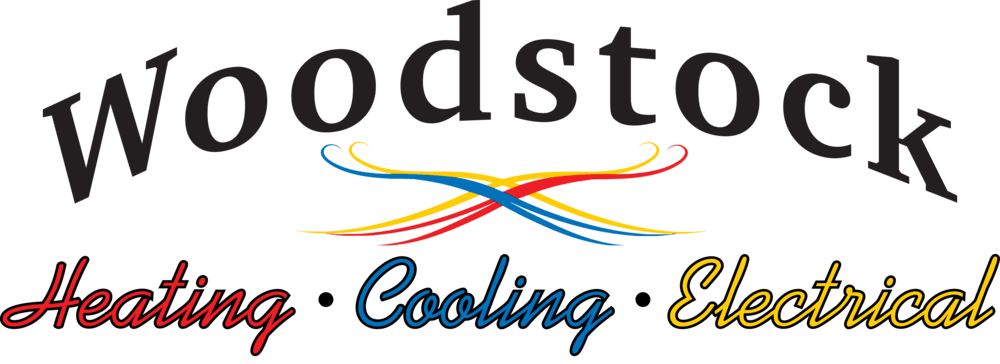Understanding Electrical Repairs in HVAC Systems
Electrical components form the backbone of modern heating and cooling systems, powering everything from thermostats and control boards to motors and compressors. When electrical issues arise in HVAC equipment, they can cause complete system failures, inefficient operation, or even safety hazards. At Woodstock Heating, Cooling, and Electrical, we specialize in diagnosing and repairing these complex electrical problems, ensuring your comfort systems operate safely and efficiently throughout the year.
The intricate relationship between electrical systems and HVAC equipment requires specialized knowledge that goes beyond basic electrical work. Our technicians understand how voltage fluctuations, amp draws, and circuit designs specifically impact heating and cooling performance. This expertise allows us to identify issues that might be overlooked by general electricians who lack HVAC-specific training.
Common Electrical Problems in Heating and Cooling Systems
Capacitor failures represent one of the most frequent electrical issues we encounter. These cylindrical components store and release electrical energy to help motors start and run efficiently. In the summer heat, capacitors work overtime to keep air conditioning compressors and fan motors running, making them particularly vulnerable to failure during peak cooling season. Signs of a failing capacitor include humming sounds from the outdoor unit, difficulty starting, or intermittent operation.
Control board malfunctions create another category of electrical repairs we regularly handle. These sophisticated circuit boards act as the brain of your HVAC system, coordinating communication between thermostats, safety switches, motors, and other components. When control boards fail due to power surges, moisture damage, or component aging, systems may exhibit erratic behavior such as short cycling, failure to respond to thermostat commands, or complete shutdown. Our diagnostic process involves systematic testing of each circuit and component to pinpoint the exact failure point.
Electrical Safety Concerns and Professional Repairs
Working with HVAC electrical systems requires understanding both high-voltage and low-voltage circuits. While thermostats typically operate on 24-volt control circuits, the equipment they control often runs on 240-volt power supplies. This dual-voltage environment creates unique safety challenges that demand professional expertise. Improper electrical repairs can lead to equipment damage, fire hazards, or electrical shock risks.
We prioritize safety in every electrical repair, following National Electrical Code standards and manufacturer specifications. Our technicians use specialized testing equipment including multimeters, amp clamps, and megohm meters to safely diagnose electrical problems without risking injury or equipment damage. This professional approach protects both our team and your property while ensuring repairs meet all safety requirements.
Diagnostic Procedures for Electrical Issues
Accurate diagnosis forms the foundation of effective electrical repairs. We begin by gathering information about system symptoms, recent weather events, and any changes in operation patterns. This initial assessment helps narrow down potential causes before we begin hands-on testing. Our systematic approach includes checking voltage levels at various points in the system, measuring amp draws on motors and compressors, and testing continuity in wiring and components.
Advanced diagnostic tools allow us to identify problems that might not be immediately visible. Thermal imaging cameras help detect hot spots indicating loose connections or overloaded circuits. Digital analyzers measure power quality, identifying issues like voltage imbalances or harmonic distortion that can damage sensitive electronics. These sophisticated diagnostic methods, combined with our extensive experience serving the community for over a century, enable us to solve even the most challenging electrical problems.
Preventive Maintenance for Electrical Components
Regular maintenance significantly reduces the likelihood of electrical failures in HVAC systems. During our maintenance visits, we perform comprehensive electrical inspections that include:
- Tightening all electrical connections to prevent arcing and overheating
- Testing capacitor microfarad ratings to identify weakening components before failure
- Measuring motor amp draws to detect developing problems
- Inspecting contactors and relays for pitting or wear
- Checking wire insulation for damage or deterioration
- Verifying proper grounding of all electrical components
- Testing safety switches to ensure proper operation
This proactive approach helps identify potential electrical issues before they cause system failures, saving money on emergency repairs and preventing uncomfortable breakdowns during extreme weather.
Integration with Modern Smart Home Systems
Today’s HVAC systems increasingly integrate with smart home technology, adding new dimensions to electrical repair services. Smart thermostats, zone control systems, and WiFi-enabled equipment require proper electrical connections and network configurations to function correctly. We stay current with these evolving technologies, understanding how to troubleshoot communication issues between smart devices and HVAC equipment.
The electrical infrastructure supporting these advanced features must handle both power delivery and data communication. Problems can arise from incompatible wiring, insufficient transformer capacity, or interference from other electronic devices. Our expertise extends to diagnosing and resolving these modern electrical challenges, ensuring your smart HVAC features work seamlessly with your home automation systems.
Emergency Electrical Repair Services
Electrical failures in HVAC systems often occur at the worst possible times, during extreme temperatures when systems work hardest. Recognizing this reality, Woodstock Heating, Cooling, and Electrical provides responsive emergency electrical repair services for both residential and light commercial properties. Our well-stocked service vehicles carry common electrical components, allowing us to complete many repairs in a single visit.
When emergency electrical issues arise, quick response prevents secondary damage to HVAC equipment. For example, a failed capacitor forcing a compressor to struggle can lead to compressor failure if not addressed promptly. Our rapid response to electrical emergencies, backed by over a century of community service, helps minimize both discomfort and repair costs. We understand that electrical problems affecting heating during winter or cooling during summer constitute true emergencies requiring immediate professional attention.
Cost Considerations and Energy Efficiency
Electrical repairs in HVAC systems vary widely in cost depending on the component and complexity involved. Simple repairs like capacitor replacements typically cost less than complex control board replacements or extensive rewiring projects. However, investing in proper electrical repairs often yields energy savings that offset repair costs. Faulty electrical components force systems to work harder, consuming more energy while delivering less comfort.
We provide transparent pricing for all electrical repairs, explaining the problem, solution, and associated costs before beginning work. Our commitment to providing top-tier heating, cooling, and air quality solutions includes helping customers understand how electrical repairs impact overall system efficiency and operating costs. By maintaining proper electrical function, HVAC systems operate at peak efficiency, reducing energy consumption and extending equipment life.











